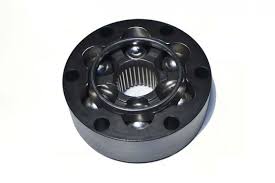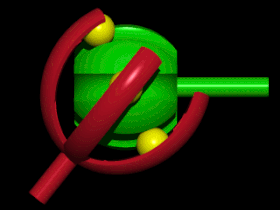Whoa there, wait a second...
Yes, the outboard end is splined and fixed to the wheel end. The shaft also changes length as the suspension takes up full motion but via a plunge joint. The pluge joint is different compared to the constant velocity wheel end as it is typically trilobular and while it does have bearing surfaces, it does not use captured balls. Only one end (plunge jt) is capable of changing the length.
The circlip and male splined stub are fixed in relationship to the axle housing when talking joint expansion and contraction. If they were not the axle seal surface would be much longer, a circlip would be replaced with a positive stop, the seal would be much more robust and dynamic allowing axial displacement in addition to rotational motion, the side gear metallurgy would be different (not pmr), the side gears would need retention clip and bearig systems etc etc etc. Plus, if the inboard side changed length at the side gear, the splines would need to be made so the dynamic sliding friction stayed very low or it would bind wearing the splines, joint, and suspension. WAY easier to just use a plunge joint.
@kydirtscooter
Your post added very valuable, and technical, consideration to mine; been a long time since I saw "plunge joint" used, I had forgotten it, so described it with pictured speech.
For others to visualize, and for you to see, the "ball-type" CV joint is made in both non- and plunging-types:
 Non-Plunging Fixed 930 CV Joint ...
Non-Plunging Fixed 930 CV Joint ...

Ultimate Plunging 930 CV Joint - 300M ...
Both of these are technically known as "Rzeppa" joints, named after the inventor from way back in Cord Car times. They are among the best joints, most expensive to make, though, but very long-lasting.
Below is a diagram of a plunge-type trilobular design. The "tulip", or pot container has 3 curved "tunnels" in it in which the rollers ride. Tulips are drawn from flat stock, fully formed, often having no machining done to them; cheap to make. The inside surfaces are case-hardened for wearability, booted to contain lubricant just like the Rzeppa type. Kinda hard to find those much anymore, I think. My '78 and '80 Fiestas had them, BIG ones, never touched one, both vehicles had 200K+.
The "tri-lobular" joint is made both plunging and non.
If it copies, here is a neat little show of a Rzeppa operating through a fairly tight angle.











